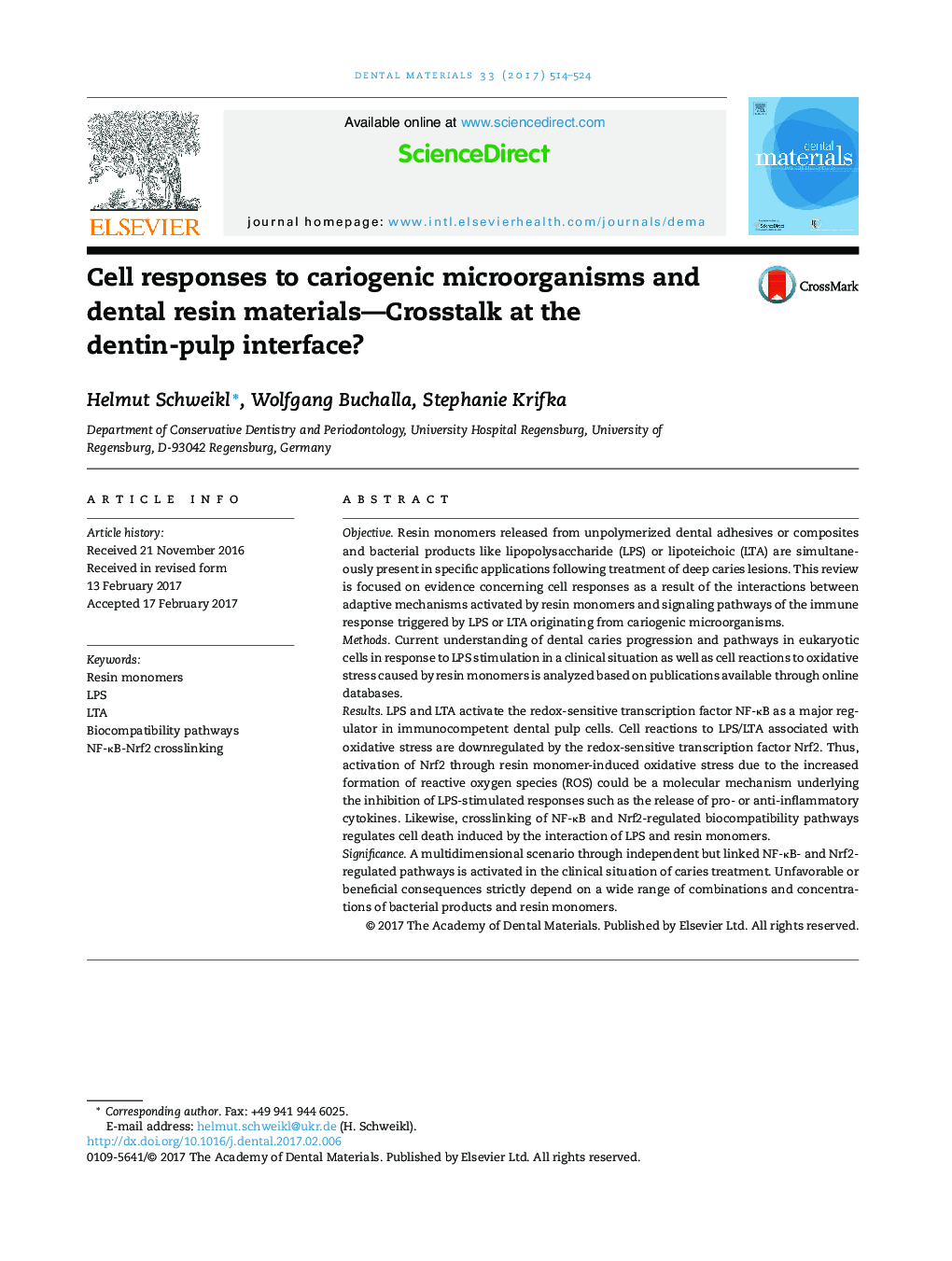| Article ID | Journal | Published Year | Pages | File Type |
|---|---|---|---|---|
| 5432954 | Dental Materials | 2017 | 11 Pages |
ObjectiveResin monomers released from unpolymerized dental adhesives or composites and bacterial products like lipopolysaccharide (LPS) or lipoteichoic (LTA) are simultaneously present in specific applications following treatment of deep caries lesions. This review is focused on evidence concerning cell responses as a result of the interactions between adaptive mechanisms activated by resin monomers and signaling pathways of the immune response triggered by LPS or LTA originating from cariogenic microorganisms.MethodsCurrent understanding of dental caries progression and pathways in eukaryotic cells in response to LPS stimulation in a clinical situation as well as cell reactions to oxidative stress caused by resin monomers is analyzed based on publications available through online databases.ResultsLPS and LTA activate the redox-sensitive transcription factor NF-κB as a major regulator in immunocompetent dental pulp cells. Cell reactions to LPS/LTA associated with oxidative stress are downregulated by the redox-sensitive transcription factor Nrf2. Thus, activation of Nrf2 through resin monomer-induced oxidative stress due to the increased formation of reactive oxygen species (ROS) could be a molecular mechanism underlying the inhibition of LPS-stimulated responses such as the release of pro- or anti-inflammatory cytokines. Likewise, crosslinking of NF-κB and Nrf2-regulated biocompatibility pathways regulates cell death induced by the interaction of LPS and resin monomers.SignificanceA multidimensional scenario through independent but linked NF-κB- and Nrf2-regulated pathways is activated in the clinical situation of caries treatment. Unfavorable or beneficial consequences strictly depend on a wide range of combinations and concentrations of bacterial products and resin monomers.
